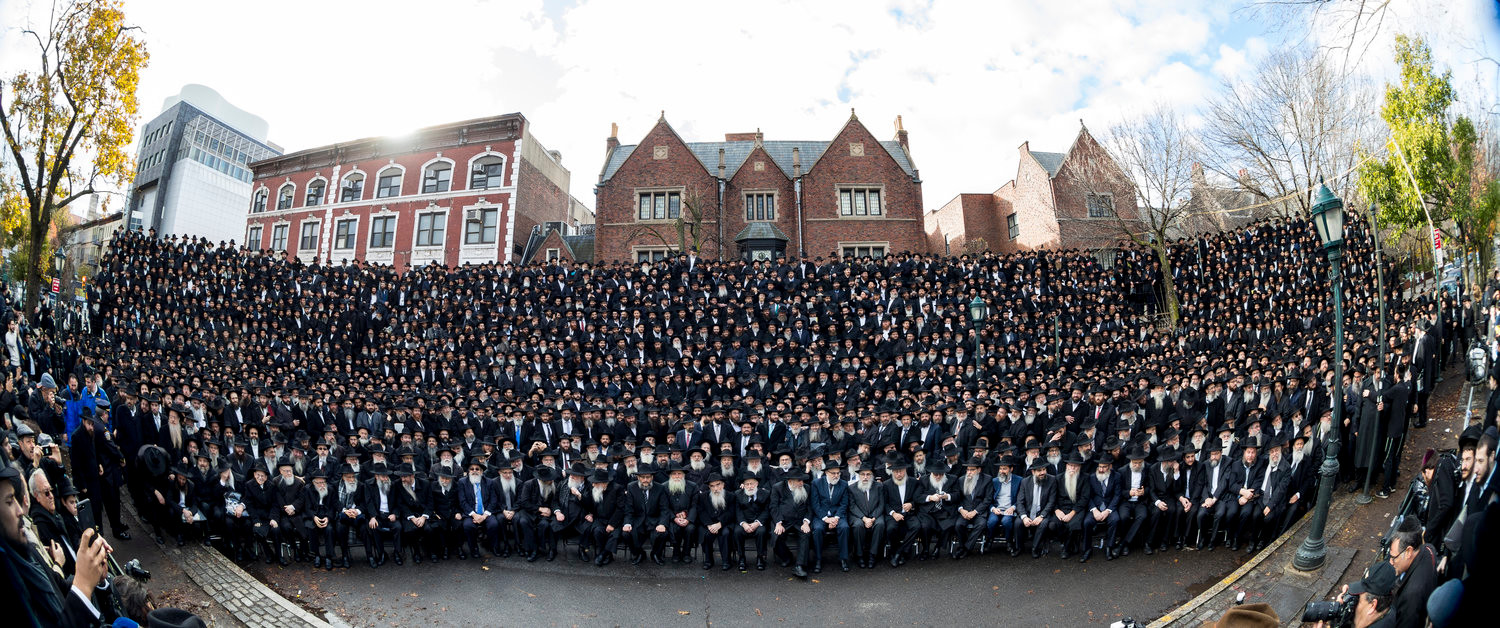Massive growth of Chabad still ‘defies logic’
How do you go about feeding a crowd of 5,600 hungry rabbis and other guests, many of whom have just traveled across the globe? If you ask Greenwald Caterers, they’ll tell you to start with 2.5 tons of meat, 10 pallets of drinks and 40 cases of tomatoes.
Greenwald was the caterer of last week’s International Conference of Chabad-Lubavitch Emissaries in Bayonne. The 44th annual Kinus Hashluchim (gathering of emissaries) drew a record-setting attendance of 5,600, including 4,700 emissaries. The rabbis traveled from as far away as New Zealand, Thailand and the Congo.
The Kinus tradition began in 1983, when Rabbi Menachem Mendel Schneerson appointed his longtime personal secretary Rabbi Yehuda Krinsky (now chairman of the Chabad umbrella organization Merkos L’Inyonei Chinuch) to chair a conference of Chabad’s North American rabbis. That October, some 65 of them gathered at Lubavitch headquarters in Crown Heights to share ideas, solutions and support.
Rabbi Yisroel Shmotkin was there that day, and he’s been to every Kinus since. As Wisconsin’s top Chabad rabbi for half a century, he has also seen the astronomical growth of both the event and the movement it represents.
“In the general sessions and individual workshops you find a wealth of innovative new ideas for programs and solutions to the challenges we all face, plus a real sharing of experiences,” Shmotkin tells JNS. “It takes you out of your little shtetl, and all of a sudden you can see yourself as part of a huge mission engraved in the lives of each person Chabad is able to touch. There’s an almost electrifying spirit of unity and enthusiasm.”
An announcement at this year’s conference highlighted the fact that, 23 years after the death of the Rebbe, the movement continues to grow exponentially. Last month, Uganda became the 100th country to have a Chabad center, adding to the 3,500 Chabad institutions around the globe. Including the Chabad.org website, these institutions reach millions of Jews every year.
Chabad-Lubavich describes itself as the largest Jewish organization in the world, and leading experts on Jewish communal life agree with that assessment.
“Nobody else comes close,” says Mark Rosen, an expert on Jewish institutions and a professor at Brandeis University’s Hornstein Jewish Professional Leadership Program.
What’s behind Chabad’s growth? A major factor could be the preservation and dissemination of countless videos and recordings of the Rebbe’s sermons, as well as dozens of his Torah commen-taries and 32 volumes containing a sampling of the hundreds of thousands of letters he wrote in response to a constant stream of questions.
“It’s the first repository of a great Torah teacher’s wisdom to be kept alive by technology,” says Chabad spokesman Rabbi Motti Seligson. “So the Rebbe continues to teach us years after his passing.”
Another widely recognized ingredient in the movement’s secret sauce is the personal dedication of the rabbinical emissaries, who move their families into remote corners of the world like India, Laos and Siberia in order to serve Jews wherever they are.
“For them, it’s not a job—it’s a mission,” Rosen tells JNS. “They’re not angling for a promotion and they don’t go home at 5 o’clock. Instead they’ve made a lifelong commitment to spread Judaism to every Jew, wherever they’re needed, so they can accomplish a lot.”
Chadad “loves and accepts every Jew wherever they are with no judging,” Rosen adds. “Their goal is to not to get you to be just like them, but to help you take the next step in being Jewish, whatever that looks for you. That brings people who would otherwise never be attracted to Orthodox Judaism to Chabad.”
Rabbi Yosef Kantor, who along with his wife Nechama runs Chabad centers in Thailand, tells JNS, “At the Kinus, I was able to tell younger rabbis that the impact they have on every Jew they meet isn’t quantifiable, but it’s there.”
In Thailand, the Kantors have served more than 100,000 meals, many of them to backpacking post-army Israelis who stop by for kosher food and a warm Jewish welcome.
“The Rebbe taught us that it’s not about having followers, but about bringing out the leadership in others,” Rabbi Kantor says.
Chabad’s model “cannot be replicated since you can’t do it if you don’t live it,” says Brandeis’s Rosen, who shares the insight of a fellow scholar from that university, Jonathan Sarna, that “no one would have predicted the greatest force in 21st-century Jewish life would be an Orthodox movement like Chabad.”
“It defies logic,” Rosen says of Chabad’s ascent. “So there must be some deeper truth that’s escaping our understanding and that our social science skills don’t quite encompass.”

 47.0°,
Mostly Cloudy
47.0°,
Mostly Cloudy 




